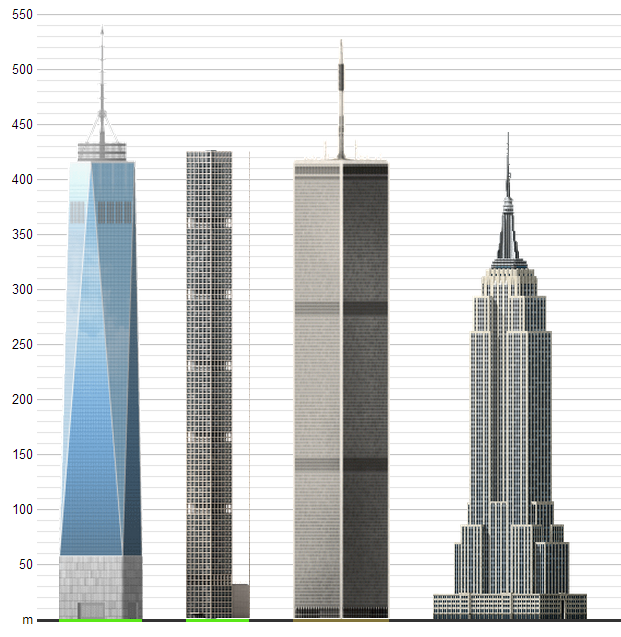The Race to the Sky: Empire State Building vs. World Trade Center
In the realm of iconic skyscrapers that define the New York City skyline, two structures stand out prominently: the Empire State Building and the World Trade Center. While both are symbols of architectural innovation and human ambition, they differ significantly in the time it took to construct them. The Empire State Building soared to completion in a mere one year and 45 days, whereas the World Trade Center complex took a staggering seven years to reach fruition. Let’s delve into the reasons behind this stark contrast in construction timelines.
Empire State Building: A Swift Ascent to the Sky
1. Precedent in Efficiency:
The construction of the Empire State Building commenced in 1930, during the Great Depression era. In the face of economic hardship, the developers were driven by a need for swift completion to start generating revenue. They set an ambitious target of completing the building in just 18 months.
2. Innovative Construction Methods:
To achieve unprecedented speed, the project employed innovative construction techniques. The building's steel framework, assembled by skilled workers at a record pace, allowed for rapid vertical progress. Additionally, the use of prefabricated components streamlined the construction process.
3. Unified Vision and Leadership:
The Empire State Building project was marked by strong leadership and a unified vision. The developer, John J. Raskob, and the architect, William F. Lamb, collaborated closely to ensure efficient decision-making and smooth execution of the construction plans.
4. Labor Force and Work Conditions:
During the Great Depression, labor was plentiful, and many skilled workers were available for hire at relatively low wages. Furthermore, stringent safety regulations, while necessary, were not as comprehensive as they are today, allowing for faster construction without compromising safety.
World Trade Center: Navigating Complexity and Tragedy
1. Scale and Complexity:
The World Trade Center project, conceived in the 1960s, was an ambitious undertaking comprising multiple buildings, including the iconic Twin Towers. The sheer scale and complexity of the project, involving extensive planning and coordination, contributed to its extended construction timeline.
2. Design and Engineering Challenges:
The innovative design of the Twin Towers, with their unique structural systems, presented engineering challenges that required meticulous planning and testing. The use of lightweight steel trusses and extensive curtain wall systems demanded careful consideration and engineering expertise.
3. Political and Regulatory Hurdles:
The World Trade Center project faced numerous political and regulatory hurdles, including zoning issues, environmental concerns, and disputes over property acquisition. These factors added layers of bureaucracy and delays to the construction process.
4. Tragic Interruptions:
Tragically, the construction of the World Trade Center was interrupted by a devastating event—the terrorist attack on September 11, 2001. This horrific event not only caused loss of life and extensive damage but also halted construction for a significant period as efforts shifted to rescue, recovery, and rebuilding.
Conclusion
In summary, the stark contrast in construction timelines between the Empire State Building and the World Trade Center can be attributed to a combination of factors, including economic conditions, technological advancements, project scale, regulatory hurdles, and unforeseen tragedies. While the Empire State Building stands as a testament to rapid construction and innovation, the World Trade Center complex reflects the challenges and complexities inherent in large-scale urban development projects, marked by both triumphs and tragedies in its history.
Through these iconic structures, we glimpse not only the evolution of architectural prowess but also the resilience of human spirit in the face of adversity and the enduring legacy of innovation and progress in shaping the modern urban landscape.
Sources:
- "Empire State Building - Construction." The Skyscraper Center, Council on Tall Buildings and Urban Habitat.
- "World Trade Center - History." National September 11 Memorial & Museum.










0 Comments